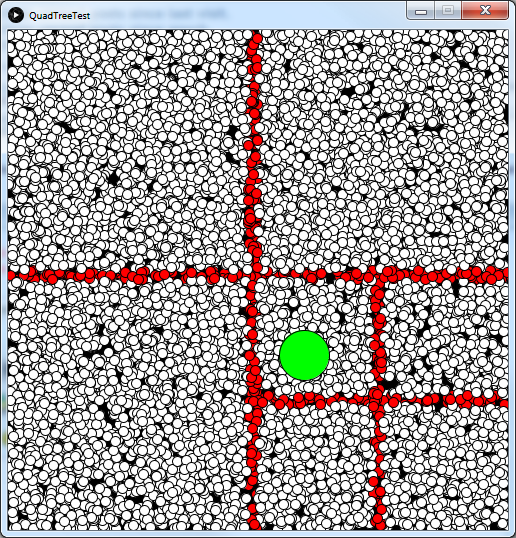I put together my own quadtree implementation that I mostly didn’t write but I made it easy for you to put into your own projects.
Go look at KaiHH’s implementation instead. My “implementation” was really just code stolen from a tutorial that I thought “worked” but clearly doesn’t.
Example:
In order for your entities to be compatible with the QuadTree implementation, you must implement the interface Sizeable which returns X, Y, and width and height.
QuadTree quadtree = new QuadTree(<your width>, <your height>);
// every game update (preferably not every frame)
quadtree.clear();
for (int i = 0; i < entities.size; i++) {
quadtree.insert(<your entity that implements Sizeable here>);
}
// to return a list of entities near a given entity
ArrayList<Sizeable> array = new ArrayList<>();
array.clear();
// fills the arraylist with entities near a given entity
quadtree.retrieve(array, <your entity>);
I didn’t make most of this, I just wanted to share (and have a little bit of competition from the other one submitted here ;D). Supports floats.


 …but hey, we have no dynamic language with Java and don’t even have duck typing, so there
…but hey, we have no dynamic language with Java and don’t even have duck typing, so there 